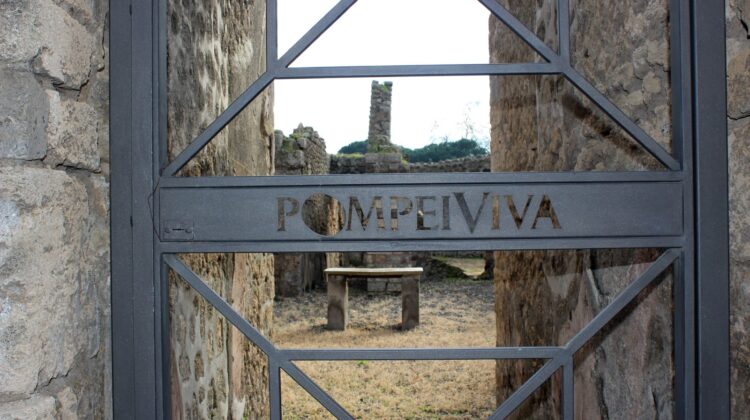
It may be 1,935 years after the eruption of one of the most dangerous volcanoes in the world, but parts of the lost city of Pompeii still have yet to be unearthed.
The 16,000 people living in the area were unaware of the signs of the active volcano in their midst. Mount Vesuvius was covered at the time with trees and looked like any normal mountain would. Because volcanoes are formed from the collision of diverging and converging tectonic plates under the Earth’s surface, the people from the area were accustomed to having frequent earthquakes. A giant earthquake is reported to have occurred 17 years before the eruption and that a great number of buildings were damaged and some people relocated. They have found evidence to support that many people were still reconstructing their homes from the earthquake when the eruption of Vesuvius began in 79 AD.
According to the two known survivors that documented the tragedy, the eruption began at 1 p.m. on August 25, 79 AD. The eruption is said to have released a hundred thousand times the amount of thermal heat than that of the bomb that was dropped on Hiroshima. Very few were able to escape and most suffocated and died from the ash that engulfed the city. This ash preserved it’s contents until 1748. The ruins were discovered a few times in earlier centuries, but left alone and rediscovered in 1748 after farmers resettled the area and began digging into the 4 – 6 meters of soil and ash that had covered the city. In 200 years, the city has slowly and carefully been excavated. Plaster casts were made of several people’s burial sites to preserve their body shapes. The ash-preserved remains have helped scientists learn about their diets, diseases, and lifestyles from the time. Some mosaics and artifacts from the excavations have been kept in their original locations, but many of them have been relocated to the museum located in nearby Naples, Italy.
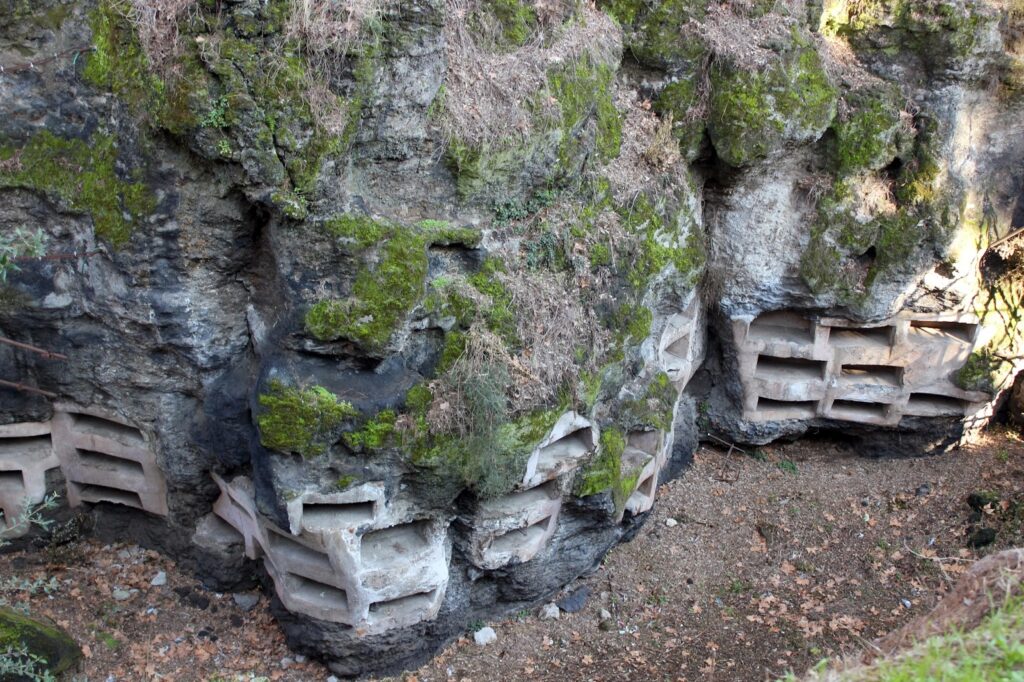
buried the cremated remains of the dead. As you can see,
it is many feet below the actual ground level today.
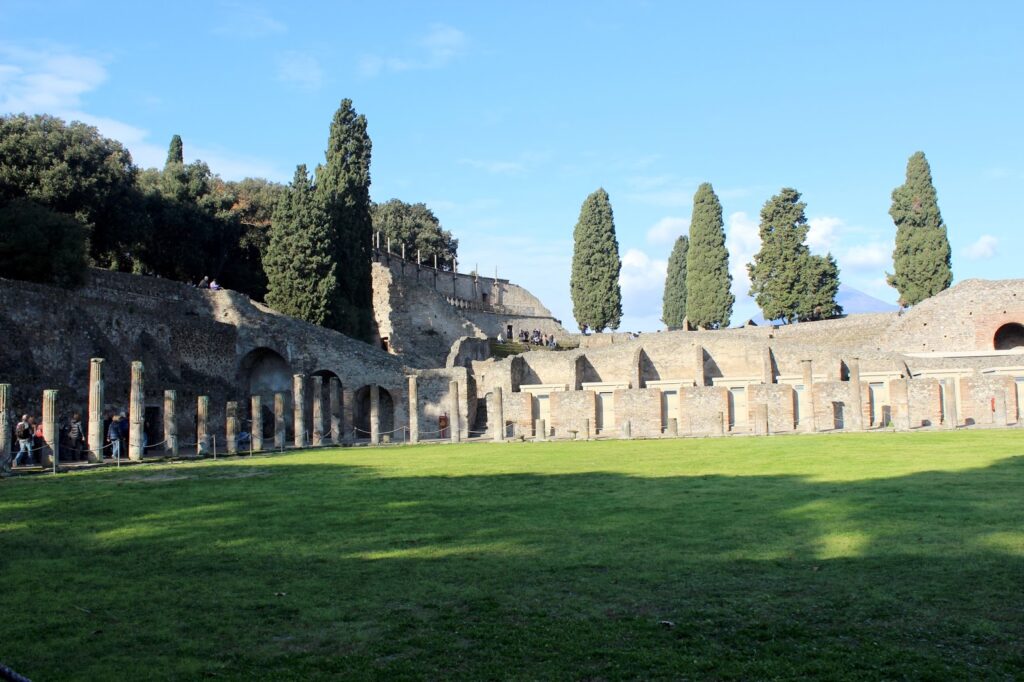
It has some small, cage-like buildings that used to house
gladiators, prisoners, and slaves.
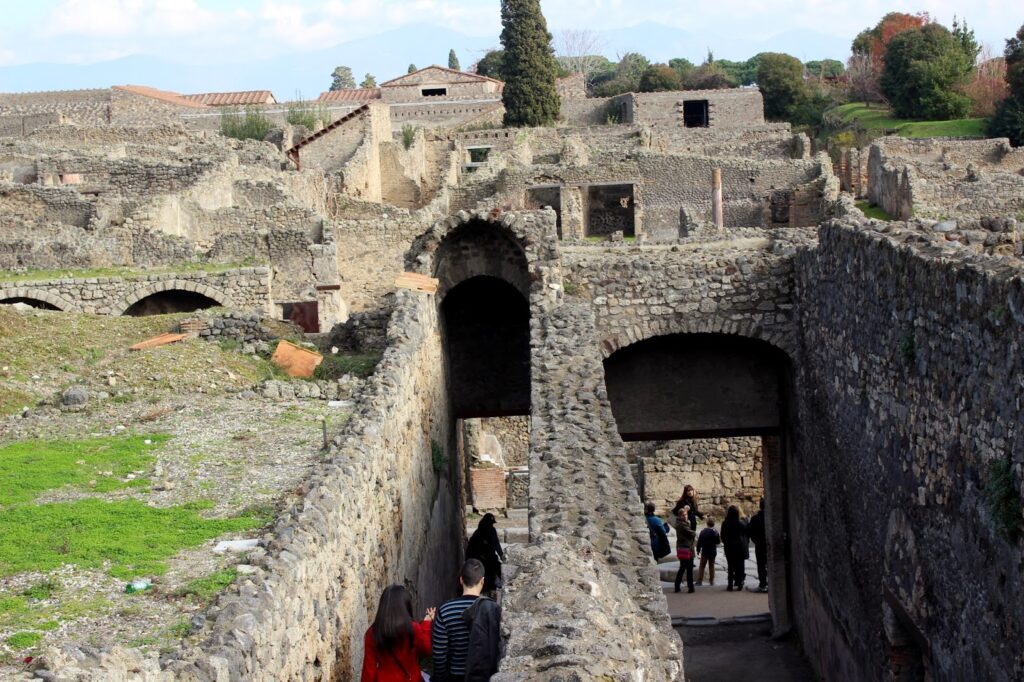
theaters that were used for local gatherings and concerts.
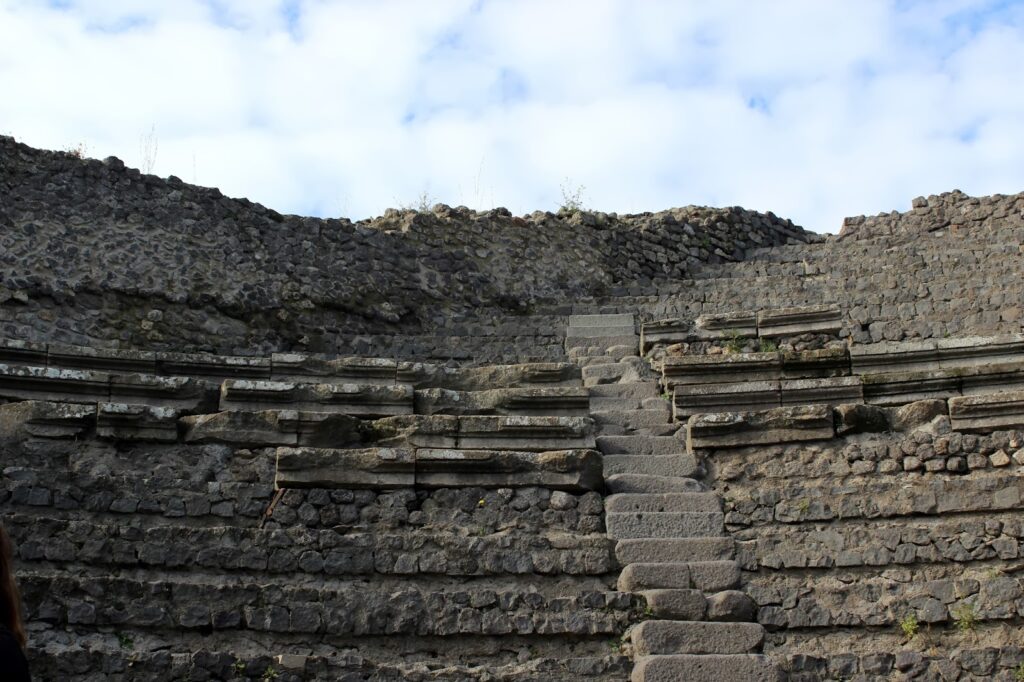
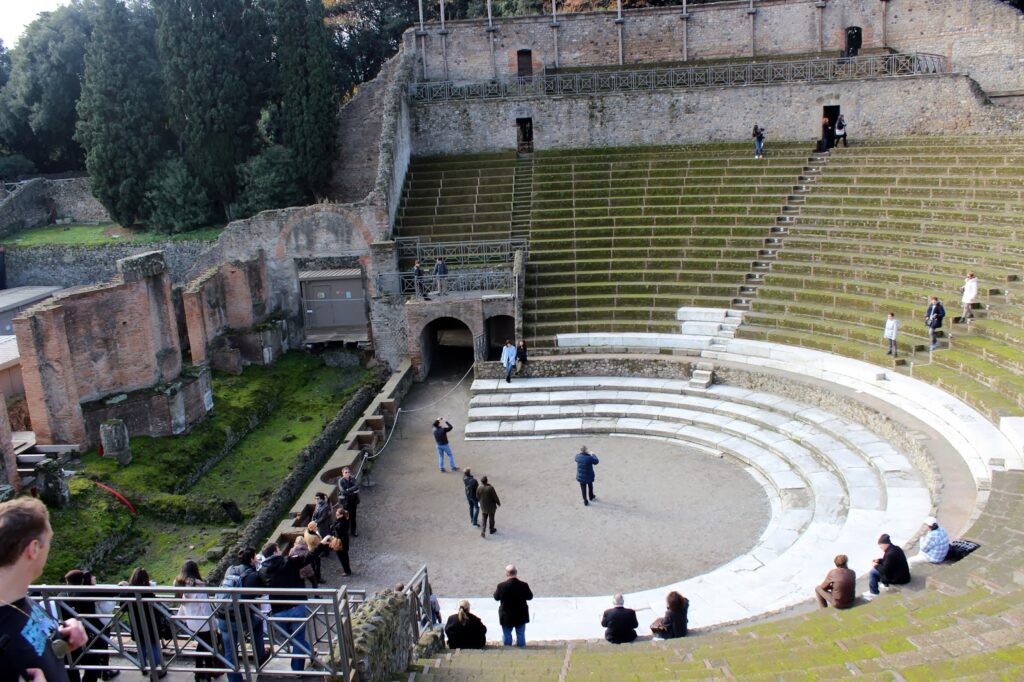
during the summers for concerts and events. Pink Floyd
played a concert in Pompeii in the 70s.
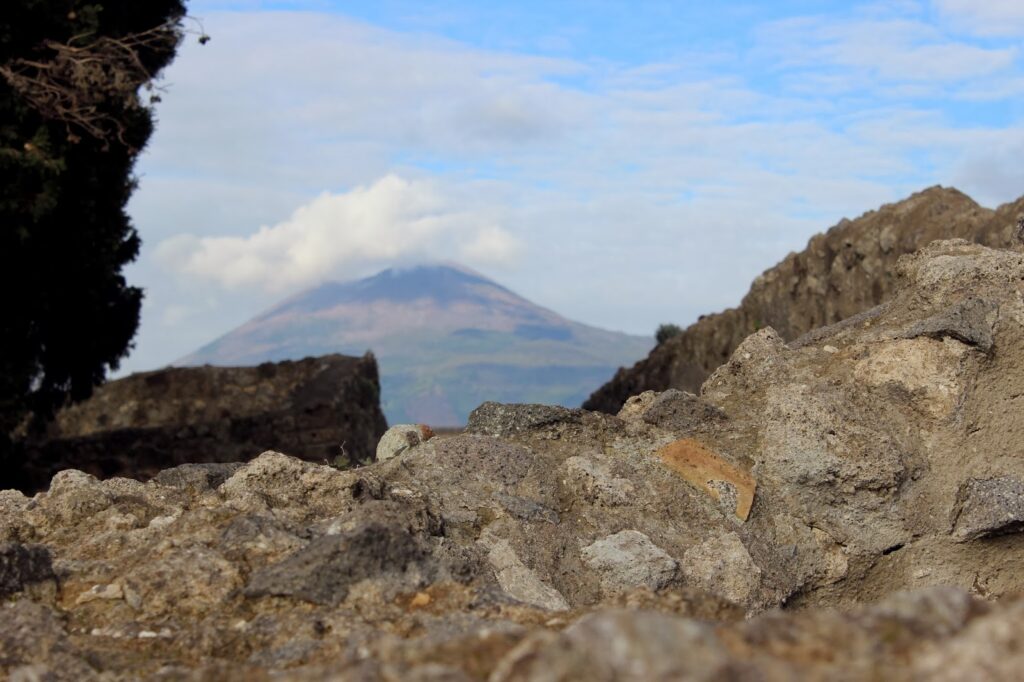
drawings and paintings found from before the eruption,
they have learned that this isn’t even close to the size of the
volcano when it erupted. It was about 10 times bigger than
it looks today.
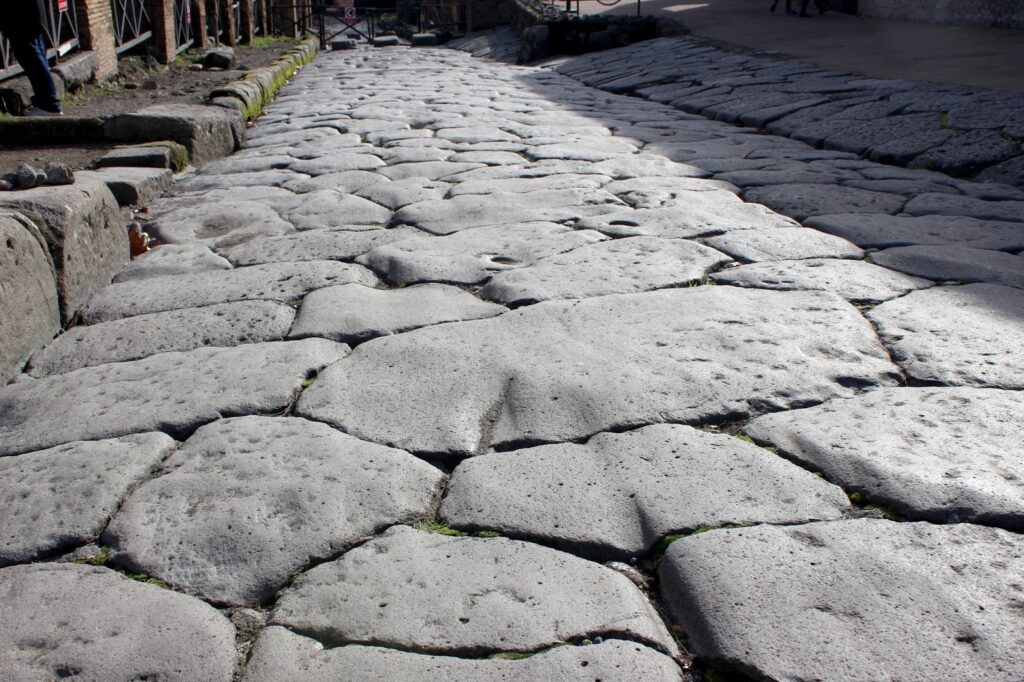
that are lain together. At the bottom of this photo, you can
see the tracks left from the constant wearing of carts.
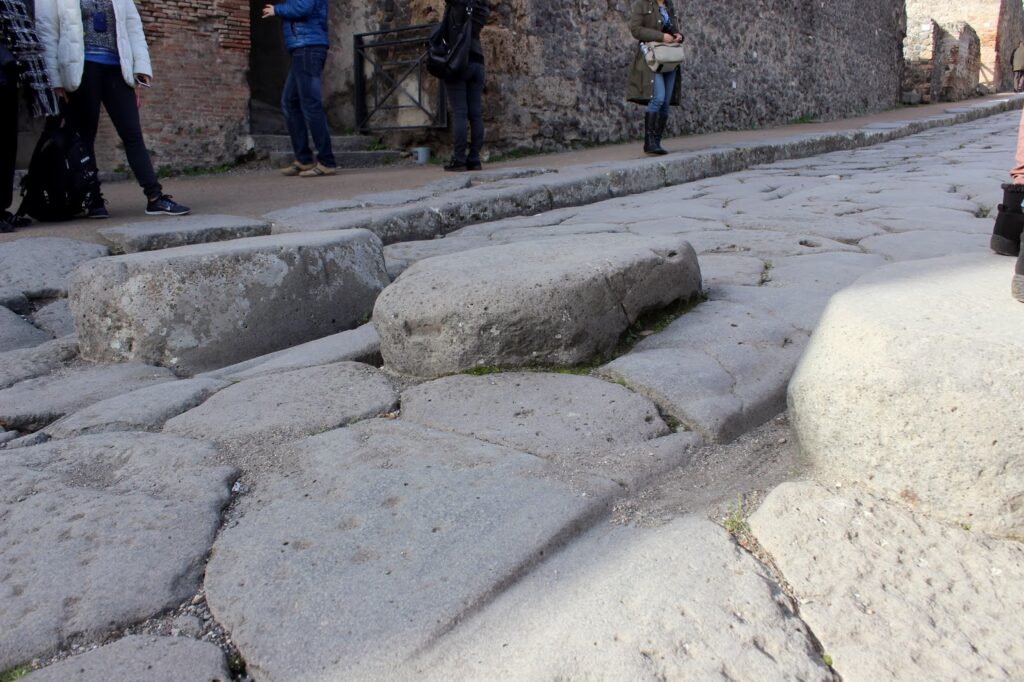
crosswalk systems. They had three big, raised stones placed
where there was heavy foot traffic to allow crossing
some of their roads safer and easier.
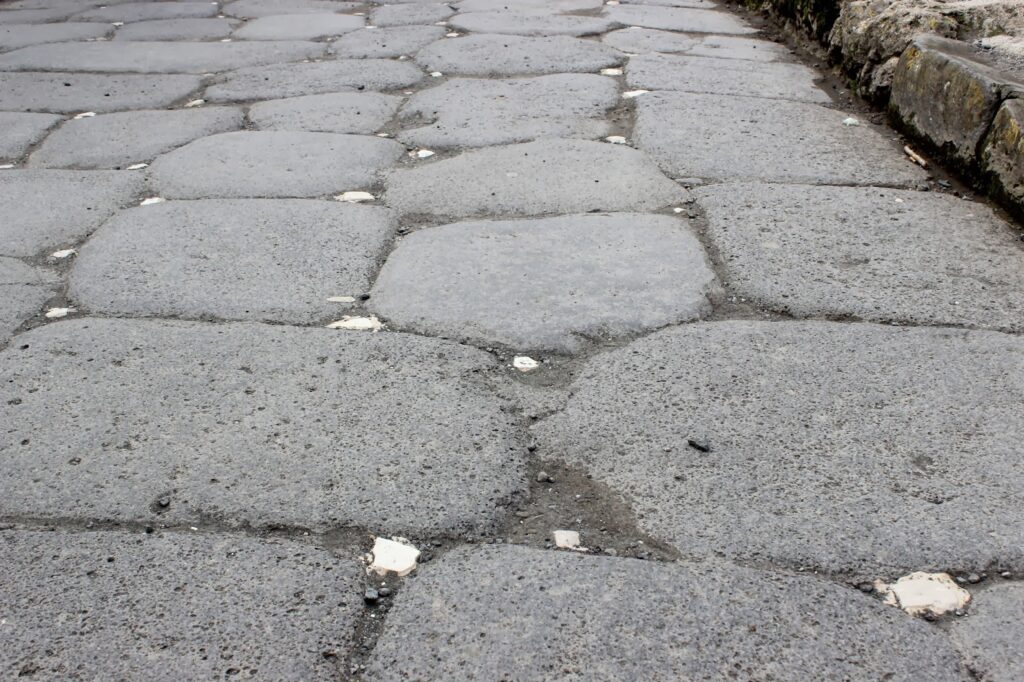
on certain streets as reflectors.
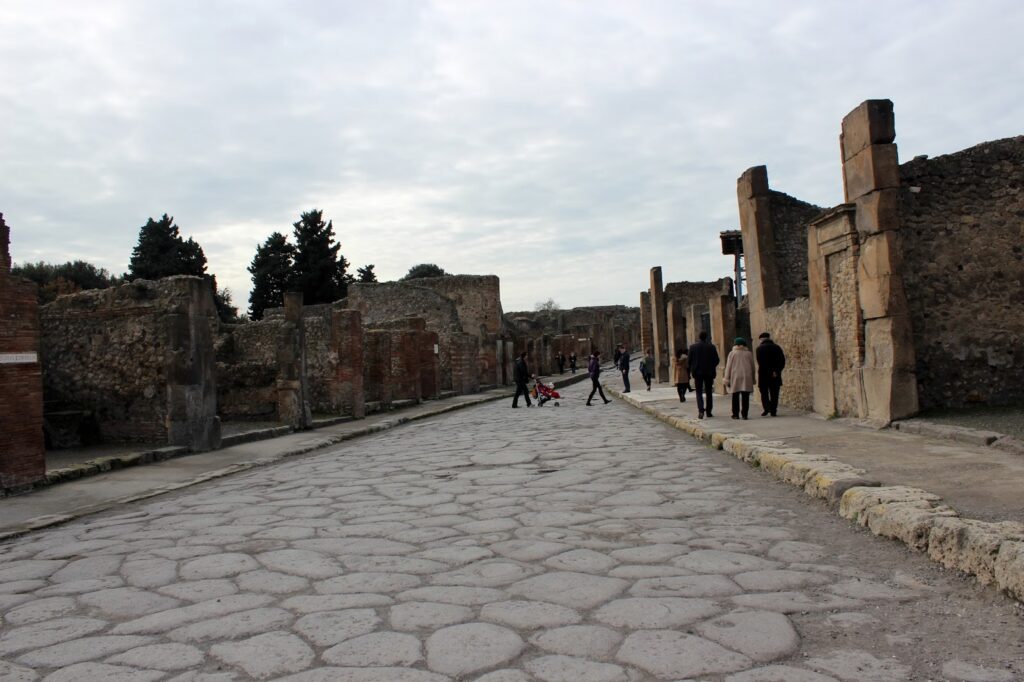
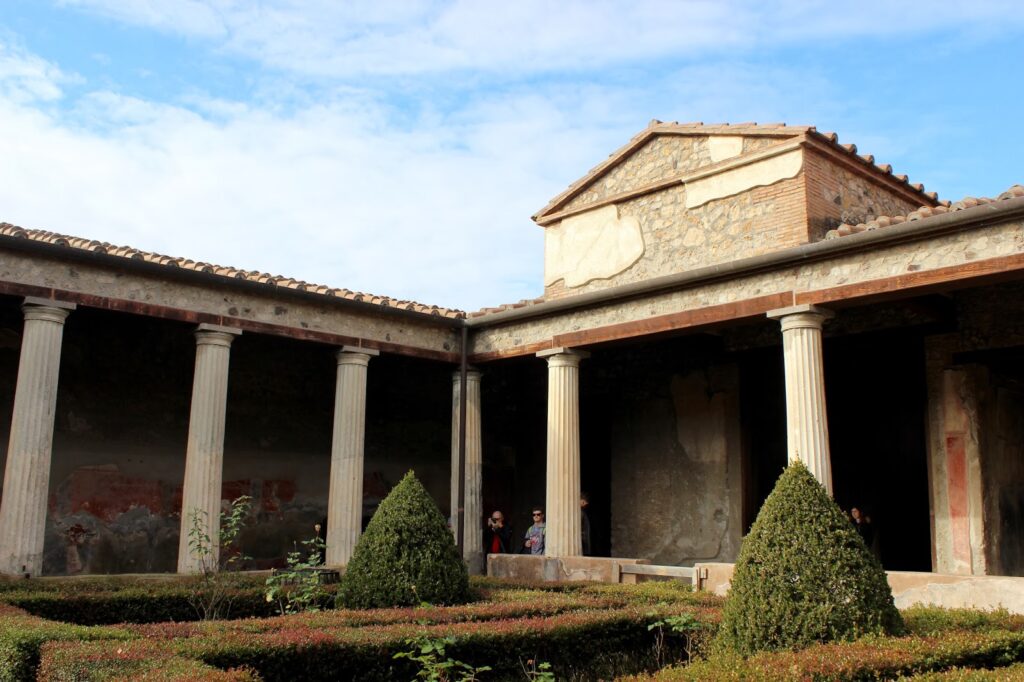
in Pompeii.
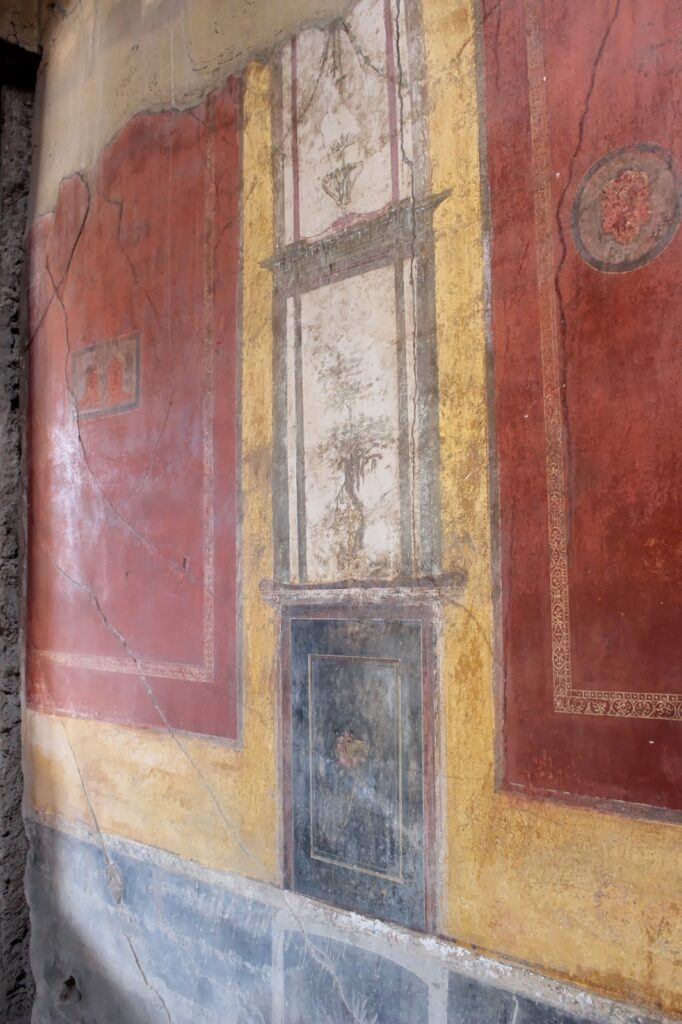
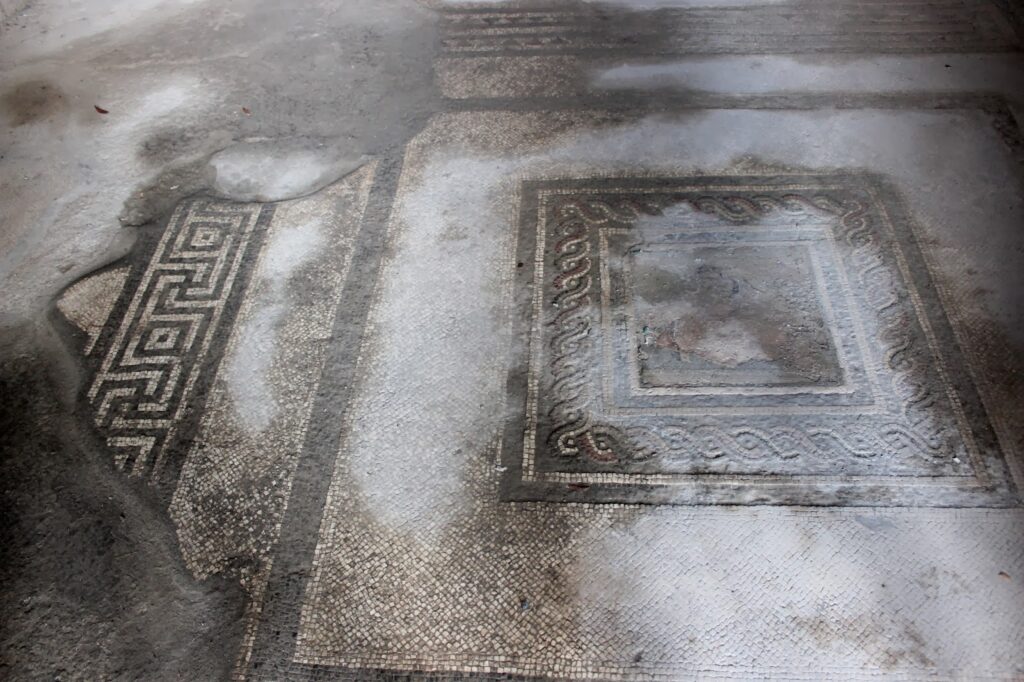
We then moved on to one of the larger bath houses in Pompeii. Going to the bath seems to have been a social event. There is a big yard for exercising. The bath houses were separated into men and women’s sections. Each section had elaborately decorated ceilings and walls, a big basin-like tub for bathing, and in the next room, there was even a sauna. Yes, Pompeii was advanced enough to have a steam room. They had ovens between the men and women’s sections, and the floors of the steam rooms were suspended allowing the heat to pass through and come out via gaps in the bricks.
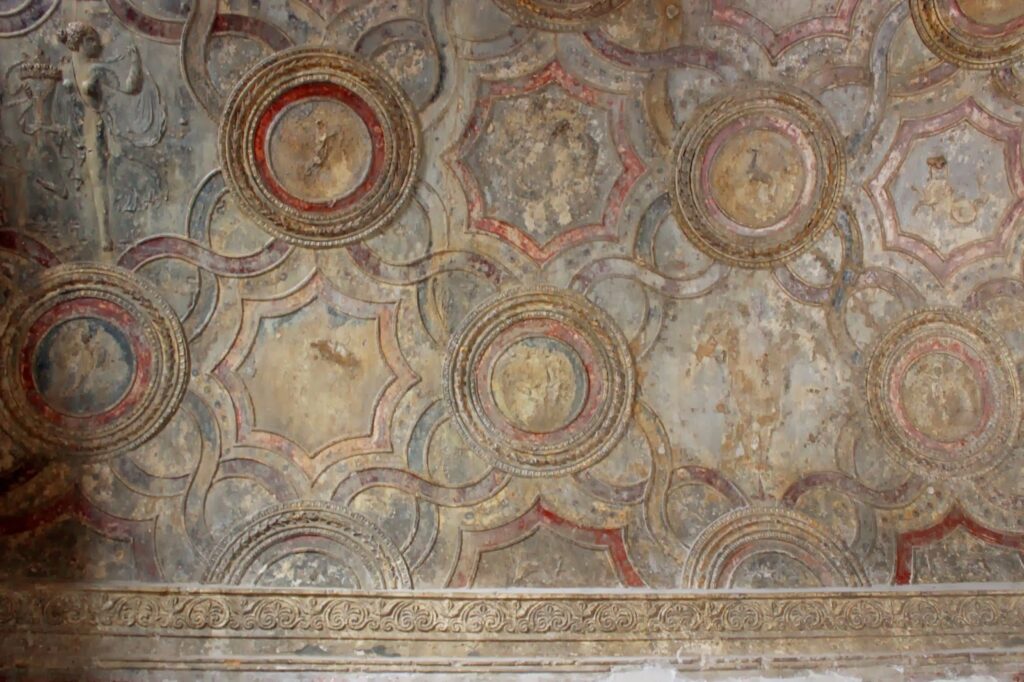
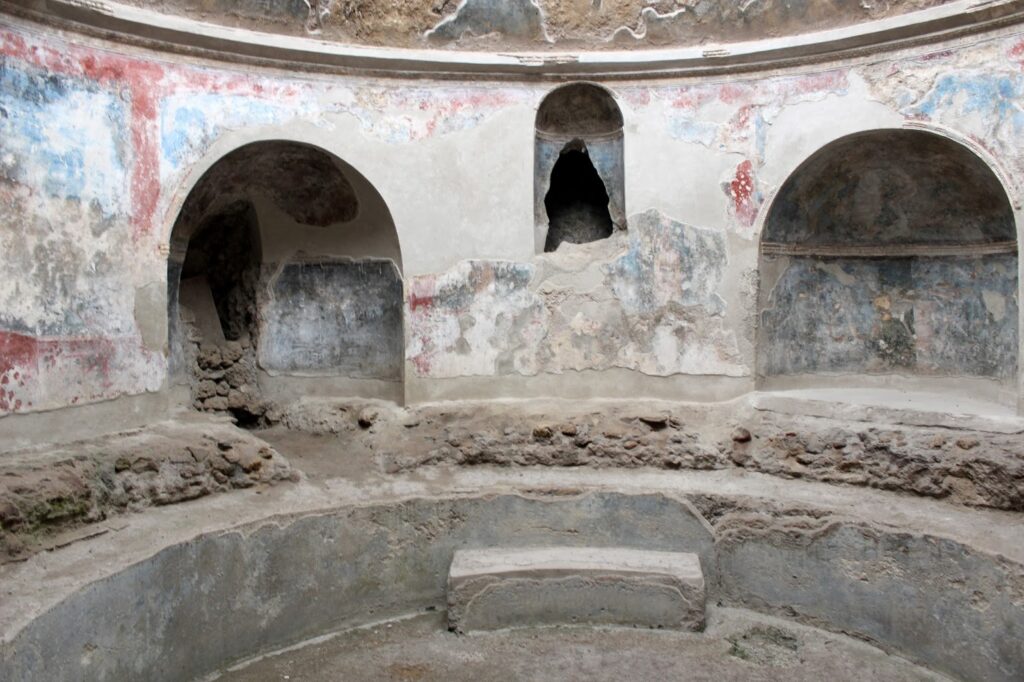
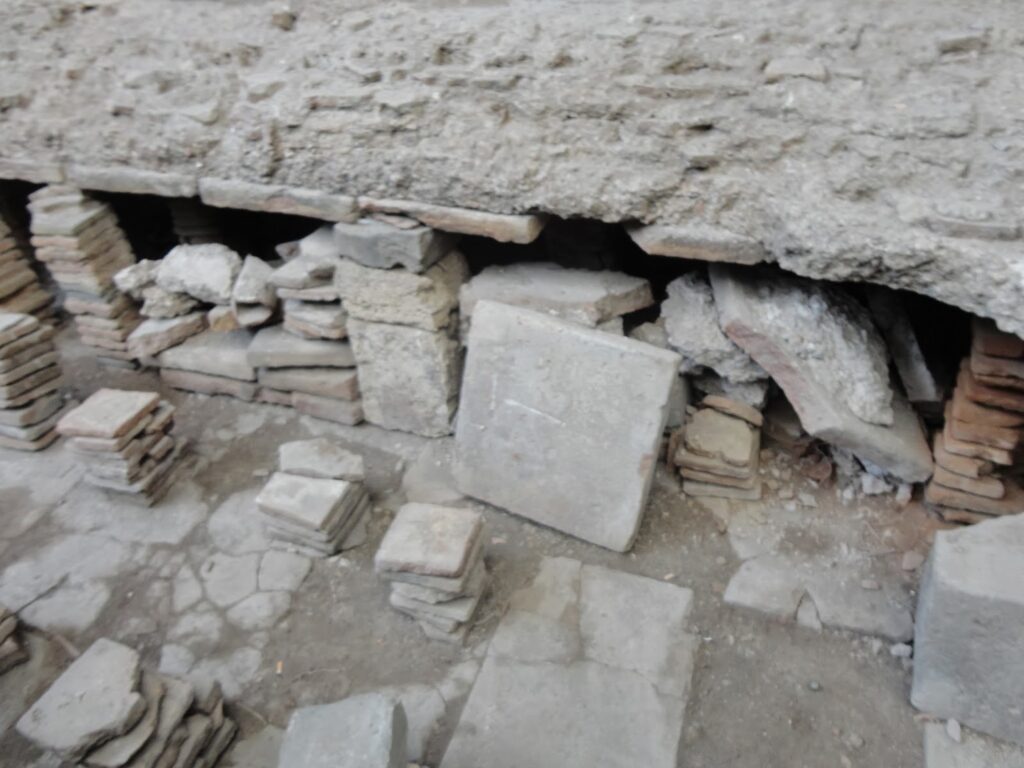
to heat the saunas. Photo by Tiffany Deaton
A Very Naughty Society
One of the things not discussed in many documentaries I’ve seen about Pompeii is that the city had a very open opinion on sexuality. In the small city of less than 20,000 inhabitants, scientists have unearthed the ruins of 25 brothels (Remember: not all of Pompeii has been excavated to date). One way to tell the brothels apart from a regular building, are the stone carvings of phallic symbols located near the doorways. Even funnier, I didn’t know how to spell the word phallic, but while viewing the Wikipedia page on the subject, I realized that the photo to accompany the entry is from Pompeii. Anyway, the brothels were normally two-storied, contained stone beds, and paintings of the offered specials of that brothel on the walls. When we went to the museum, there was also a gallery of it dedicated to the artifacts and paintings found that depicted these symbols. They have found paintings, statues, pipes, and much more shaped into sexual body parts that were very much celebrated in those days instead of being viewed as wrong and shameful.
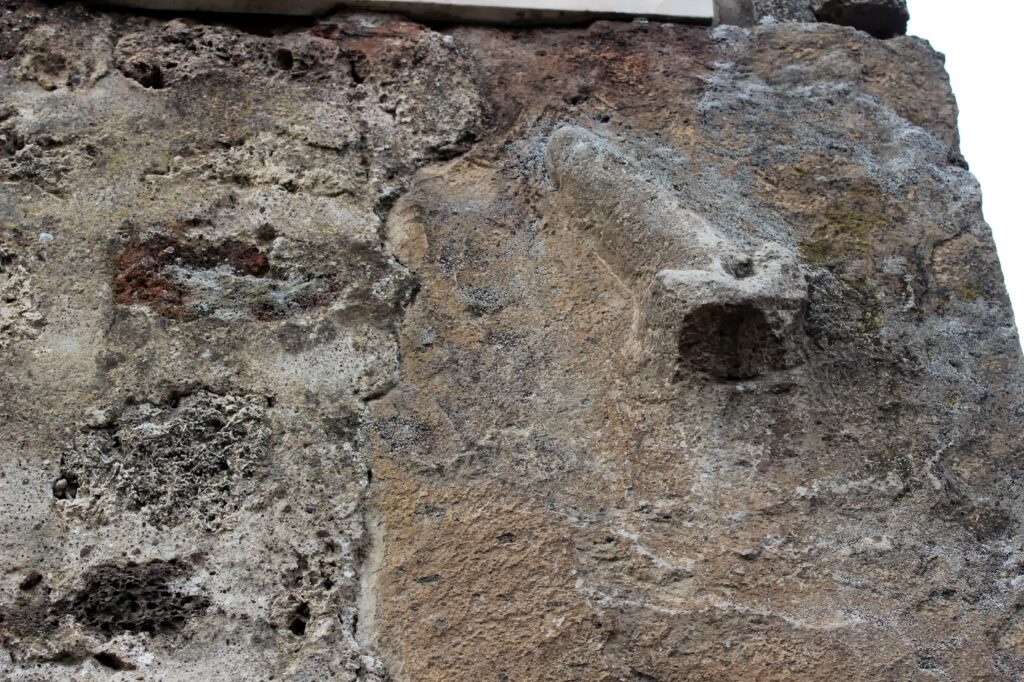
this place was a brothel.
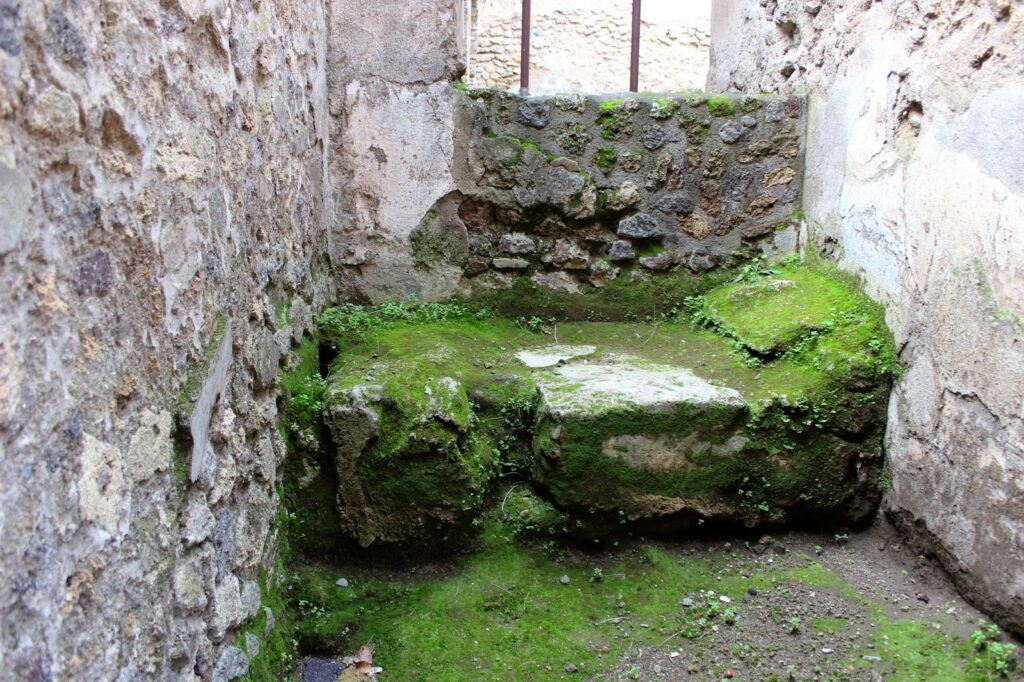
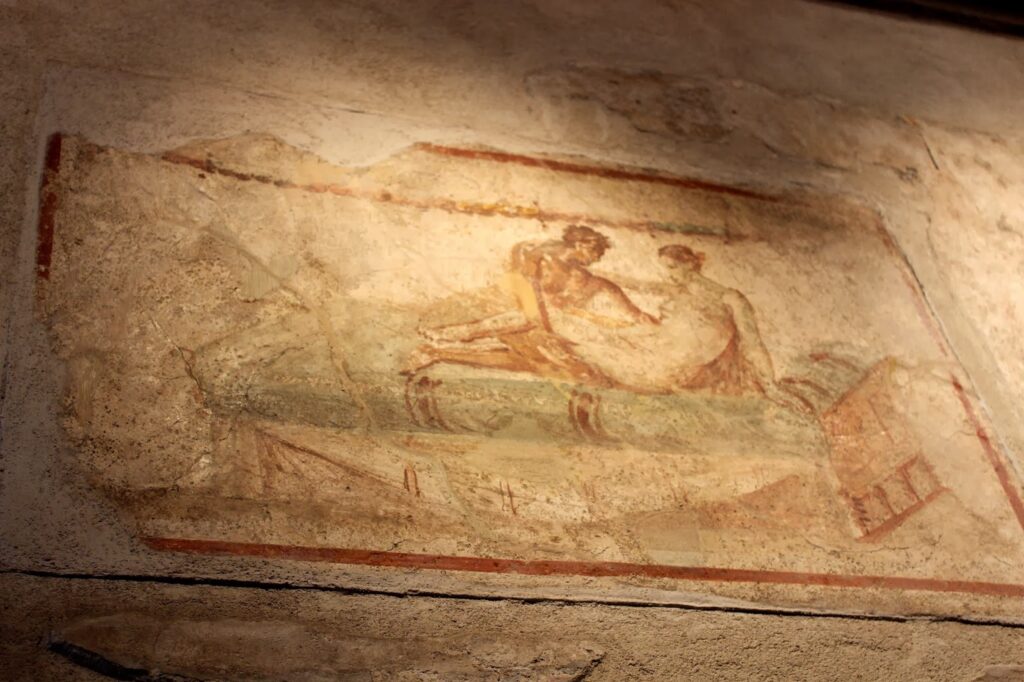
could order.
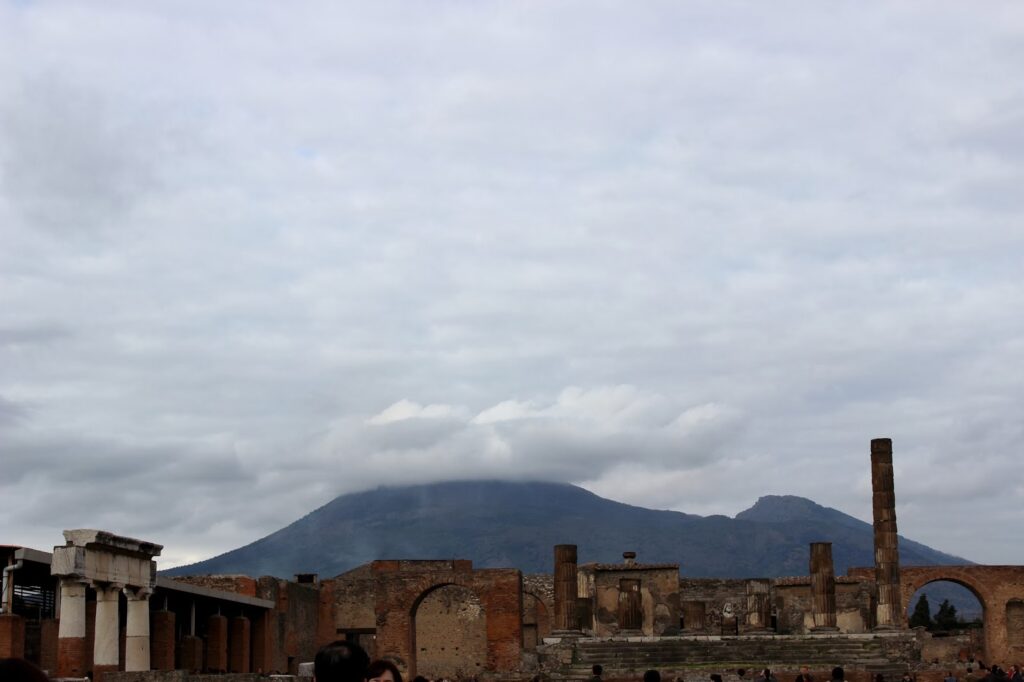
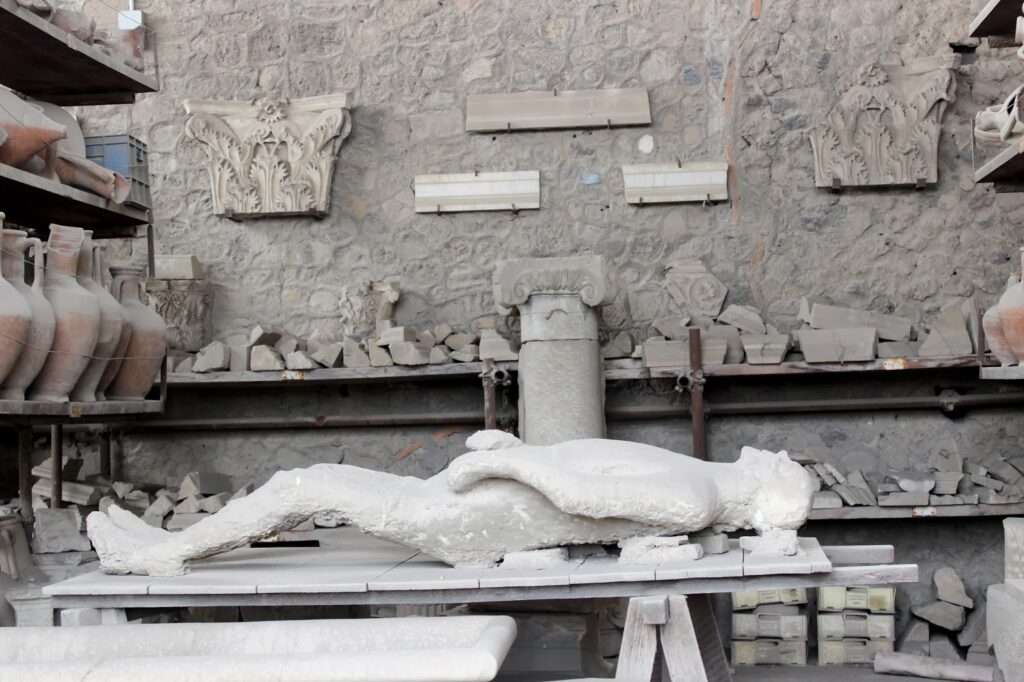
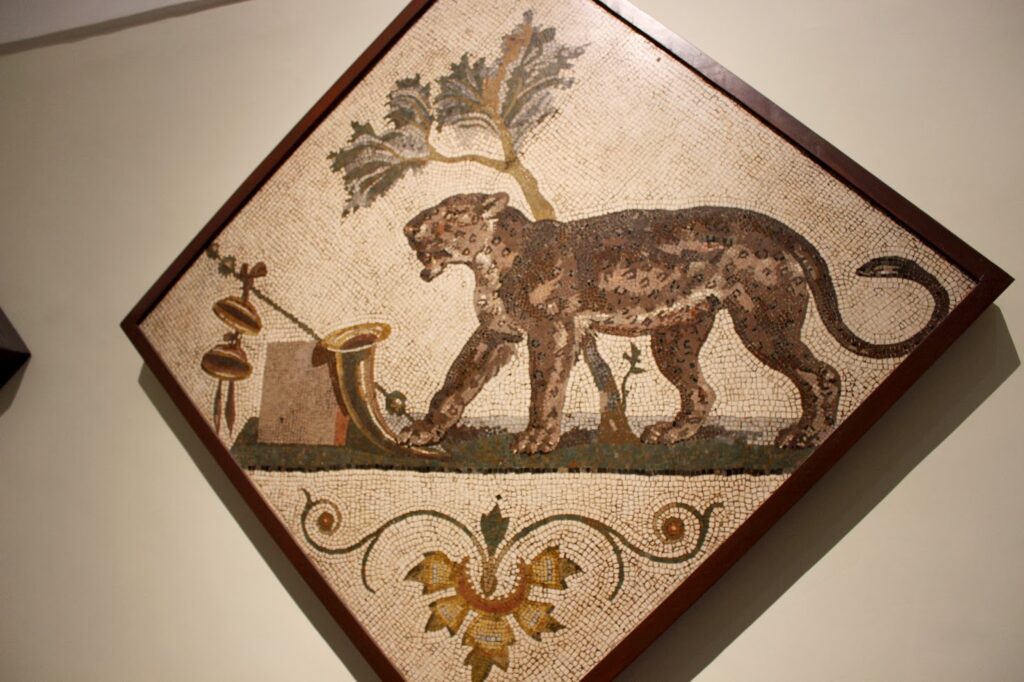
Now displayed in the museum in Naples.
After that we had a lunch consisting of Italian pizza and then ventured back to Rome. The ride there and back was about three hours each way. Our guides told us history details about Rome, Naples, Pompeii, and Italy in general. Those details will be discussed in my final blog entry from my Christmas 2014 Vacation.

Leave a Reply